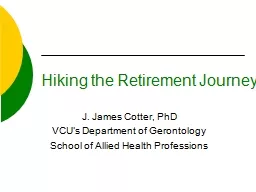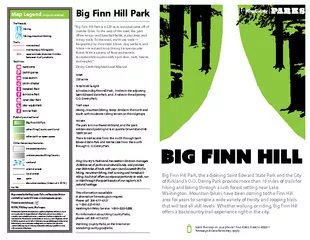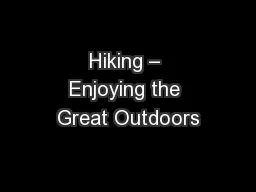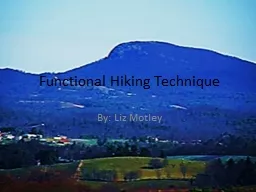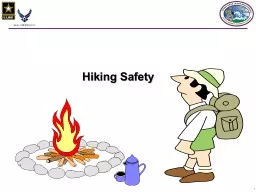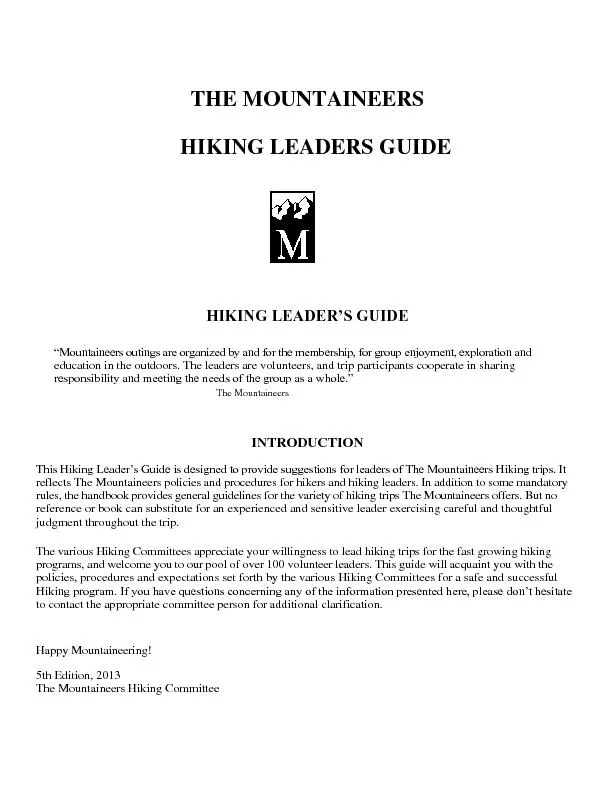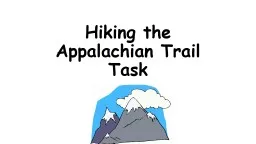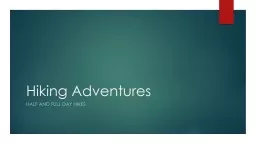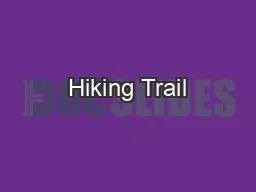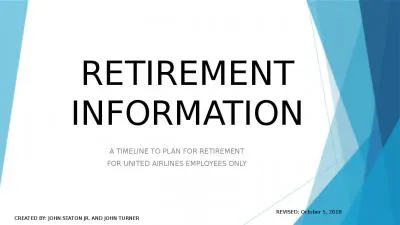PPT-Hiking the Retirement Journey
Author : LoveBug | Published Date : 2022-08-04
J James Cotter PhD VCUs Department of Gerontology School of Allied Health Professions Knowledge Needed for Hiking Lay of the land Equipment How to stay fit and
Presentation Embed Code
Download Presentation
Download Presentation The PPT/PDF document "Hiking the Retirement Journey" is the property of its rightful owner. Permission is granted to download and print the materials on this website for personal, non-commercial use only, and to display it on your personal computer provided you do not modify the materials and that you retain all copyright notices contained in the materials. By downloading content from our website, you accept the terms of this agreement.
Hiking the Retirement Journey: Transcript
Download Rules Of Document
"Hiking the Retirement Journey"The content belongs to its owner. You may download and print it for personal use, without modification, and keep all copyright notices. By downloading, you agree to these terms.
Related Documents

